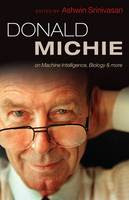A study of the science of flow that offers many pleasures to the reader (but a clear statement of the book's aims is not one of them)
 This is another of Philip Ball's quirky, scholarly, illuminating studies of the patterns of nature, the second in a trilogy. The others deal with shapes and branches; this one deals with flow of all kinds, from convection in the sun to avalanches in a pile of rice.
This is another of Philip Ball's quirky, scholarly, illuminating studies of the patterns of nature, the second in a trilogy. The others deal with shapes and branches; this one deals with flow of all kinds, from convection in the sun to avalanches in a pile of rice. Ball has struck popular science gold with this trilogy, because he has a subject matter that is at the same time scientifically intriguing, visually engaging, and easy for the layperson to grasp. Fluid flow -- the paradigm of flow in this book -- is a typical case. Eddies and turbulence are interesting for scientists because they are horribly complicated. But because they are horribly complicated, the only hope of understanding many features of fluid flow is through a kind of simple qualitative modelling, the kind that is easy to explain to a popular audience. The Kelvin-Helmholtz instability, for example, is a mechanism by which flowing water forms wavy currents. It is a simple mechanism, communicable in a picture, and it creates delicate plumed patterns in water that make great images. And like most of the patterns in this book, it crosses mediums easily -- it is present in clouds as well as rivers.It turns out, as Ball reveals in the last chapter of the book, that real turbulence is not susceptible to any simple models like the Kelvin-Helmholtz model. But this is a rare exception. And even with turbulence Ball finds a pretty way of illustrating the science: he concludes as he began the book, with a work of art. This artistic theme -- the first chapter is about representations of fluid flow in Western and Eastern art, with a focus on Leonardo Da Vinci -- is typical of Ball's playfulness in this trilogy, his fondness for interesting diversions. These are indeed diverting, but they can also be disorientating. In the case of this volume, I finished the first chapter without having much idea of what the book would be about.
This book is certainly about something, though, even if it that something is hard to pin it down. It's about fluid motions, of course: aside from the conventional topics of water flow and convection, we have intruiguing chapters on the collective behavior of grains (in dunes, piles, and sheets) and on the movement of flocks of animals, crowds of people, and lines of traffic. But it's also about deeper themes, which Ball mentions now and then but explains systematically. It's about trying to describe and understand a wide class of phenomena through a single parameter -- whether it is Rayleigh's number for describing the tendency of fluids to give convection patterns, or Reynold's number for describing the eddy-forming habits of a liquid stream. In a vague way it is about self-organisation, the capacity of macroscopic entities to form complex patterns with no outside help except a steady influx of energy. And in a fleeting way it is also about self-organising criticality, the quality that some phenomena have of spontaneously entering highly unstable states -- a quality that the now-legendary sand-pile is supposed to have.
Readers who are not interested in these themes, perhaps because they would rather see them treated front-on rather than in the occasional sidenote, will still find plenty to enjoy in this book. The simplest pleasure it offers is to witness similar patterns in disparate phenomena: lane-forming on human footpaths and in the trails of army ants; convection not just in boiling water but inside the earth, in clouds, in cereal packets, and in the regularly-spaced circular craters that shape some landscapes in Norway and Alaska. Another of the book's pleasures is its narration of the process of science, the sequence of attacks by different scientists, using different methods, on the same problem. In Flow, Ball's account of successive attempts to explain sand dunes is typical of his blow-by-blow coverage of the process of discovery.
The breadth and detail of Ball's interests in this book means there are many other pleasures besides, from the historical (Faraday's prescient thoughts on convection in grains) to the domestic (an explanation of why shaking a cereal packet drives the chunky bits to the top). The downsides are that the scientific detail is sometimes heavy-going, and that the underlying themes of the book (aside from the general idea of fluid motion) are nebulous. On a more specific note, Ball's discussion of self-organising criticality did not ease much of my confusion about that topic. On the whole, however, Flow deserves its place in Ball's trilogy -- and that is high praise.

